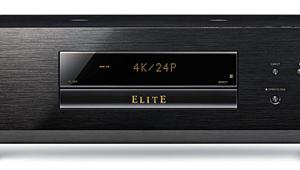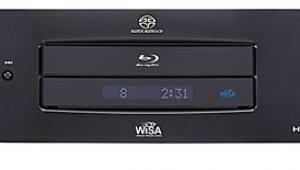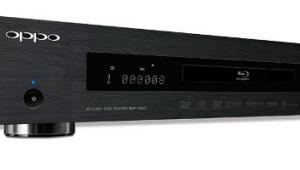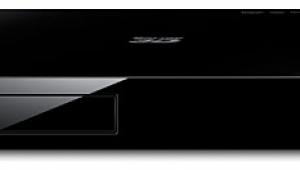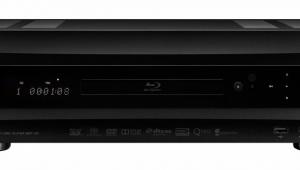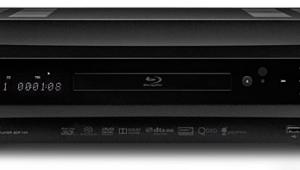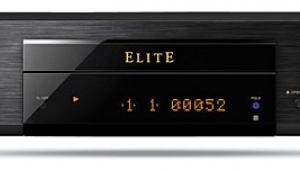I haven't seen any update on the Roku stick, is that still coming?
Oppo BDP-103 Blu-ray 3D Player

We’ve come a long way since Blu-ray hit the market in 2006. Back then, players retailed for over $1,000, took more than a minute to boot up, and as long as two and a half minutes to load a disc. Thankfully, those days are behind us and the user experience with Blu-ray is now approaching that of a DVD player—although we’ll never get rid of the frequent firmware updates thanks to Hollywood’s piracy fears.
A couple of years ago, 3D burst on the scene and was initially available only on top-of-the-line players, but as of today, you can find this feature in the sub-$100 category as well. With all these advancements and price drops, how can a company have the gall to release a player in late 2012 that retails for $499 when a consumer can buy a player with similar features for a third of the cost? Well, the short answer is that it’s an Oppo. For the long version, keep on reading.
Based in Mountain View, California, Oppo Digital has earned a reputation for delivering superior products and outstanding customer service—the two main reasons why its wares are worth the extra bucks. It’s no surprise that every Blu-ray player it has released has earned the prestigious Top Pick honor at Home Theater. Its latest player, the BDP-103, has a lot to live up to and is more than ready to meet the challenge.
Build Quality
Oppo started out as an Internet brand available from the company directly or through Amazon, but in a surprise move, its players became available through select Best Buy and Magnolia Hi-Fi stores. Despite this new model of distribution, the BDP-103’s packaging is meant for the rigors of ground shipping via FedEx or UPS. When you first pop open the box, you won’t find any cheap Styrofoam or cardboard protecting your investment. It’s wrapped in a reusable carry bag firmly housed in custom-fitted foam. Unlike Oppo’s competitors, its remote and various sundries aren’t floating around the box—they come encased in a sturdy secondary box that aids in keeping the player stable during shipping.
Inside the secondary box, you’ll find a grounded power cord (an upgrade over the BDP-93), a 6-foot HDMI cable, a Wi-Fi dongle, and a well-designed remote control. As with all of Oppo’s previous players, the BDP-103 sports fantastic build quality and weighs in at a solid 10.8 pounds.
Like the BDP-93, the new model has a black anodized aluminum front panel with various transport buttons and navigation controls. Additionally, you’ll find a USB input and an MHL (Mobile High-definition Link)–compatible HDMI input. Why the heck would a Blu-ray player have an HDMI input? Well, I’ll get to that a bit later.
The rear panel contains an Ethernet port and two HDMI 1.4a outputs so you can run one cable to an AVR and a second directly to your display if your AVR isn’t 3D compatible. You won’t find a component video connection on this or any new Blu-ray player since new copyright protection rules kicked in as of January 2012, although there is a composite video output you can use for diagnostic purposes. Audio outputs include 7.1-channel analog, coaxial, and TosLink. Additionally, you’ll find an RS-232 input, two USB ports, an IR signal input, and a second HDMI input.
One of the things Oppo has been known for over the years is its outstanding implementation of various video processing solutions. Oppo uses its expertise in this area and those HDMI inputs to differentiate itself from the masses and allow users to connect other source components such as a TV set-top box, mobile phone, or camcorder to the player in order to utilize its superior video processing. Furthermore, since the front-panel HDMI input is MHL compatible, if it’s connected to another MHL-enabled device (like a smartphone) through an MHL cable or adapter (not included), then the port can accept high-resolution signals and simultaneously charge the device at the same time—although smartphones aren’t the only MHL-compatible devices.
By the time you read this, Roku will have released its Streaming Stick, which will be able to utilize the port to expand the Oppo’s streaming options. Once the Streaming Stick is available, we’ll test it with the BDP-103, so be sure to check HomeTheater.com for the latest news.

Like its predecessors, the BDP-103 can decode all of the high-resolution audio codecs from Dolby and DTS, as well as uncompressed PCM found on some soundtracks, for output to an AVR or surround processor over HDMI. If you have a rig with onboard decoding, the player can send the raw bitstreams over HDMI sans the secondary audio from BonusView Blu-ray Discs or the clicks and beeps in the menus. If you want to go old school and fight with the plethora of analog cables, the Oppo’s Cirrus Logic CS4382 digital-to-analog chip can decode and output the lossless audio from its 7.1 analog outputs.
The player offers two different video processing solutions. HDMI-1 is serviced by Marvell’s Kyoto-G2H video processor with the latest Qdeo technology that can upscale all video sources to 4K (3840 x 2160) and can convert 2D signals to a 3D output. HDMI-2 uses a custom-made MediaTek dual-core processor. The Qdeo offers a superior video processing solution, so that’s the preferred choice for most users, with one caveat—if you have a large SACD collection and want to send the native DSD signal to a surround preamp-processor that can handle it, you should use HDMI-2 for audio because the Qdeo chip doesn’t support this output. If you use HDMI-1, the DSD is converted to PCM. I tested both methods and couldn’t distinguish any differences between the Oppo’s decoding versus my Integra DHC-9.9’s processing of the native DSD signal.
If you own a vast DVD collection with a lot of foreign titles, the BDP-103 includes PAL/NTS conversion for both disc playback and video output, subject to DVD region restric-tions. The player can also output DVDs at 1080p/24 instead of 60 frames per second, which is a feature I don’t personally use but others may appreciate more.
For buyers planning on installing a constant-height projection system using an anamorphic lens, the player also offers the vertical stretch processing required by such a setup. But subtitles often disappear in a constant-height configuration, since they are usually located in the black bars of a 2.35:1 source and those bars are cropped off in the vertical stretch processing. The Oppo’s subtitle shift feature can move these subtitles up and down to keep them visible.
I don’t use this type of constant-height setup, however, so I couldn’t check these features for this review. BD-Live compliance isn’t an issue due to the player’s internal 1 gigabyte of storage. If you require more memory, the player’s three USB ports can be used for expansion.
- Log in or register to post comments



The last three years,they are number one bluray player out there,I have bdp-083 its still the best player in my house and i will get 103 sometime 2013.

I just purchased the bdp-103 and love it. My question is what is the preferred conection. I have a pioneer elite sc-55 and a Panasonic st50 65". Do i connect it toy receiver or do i go from hdmi 1 straight to my tv and hdmi 2 to my receiver? Thanx

First love the 103, But have to run the volume level at and around + 80-90 to watch movies (streaming) to get enough sound for the movie, Doesn't seem right! Have a 5.1 system 2 subs and running analog cables directly to the Rotel amp which puts out 100 watts per channel.
Any answers to help with this would nice, thanks

Same problem as Catman:
BD-103 analog(ue)! sounds powerful going into NAD T753 integrated.
Going straight into Acurus 200Five ( more power) it does not reach the same volume levels. Is it a weak(relatively) pre-amp or just a bad match for the Acurus? Do I need a preamp for it? OPPO tech support says it CAN be used as a preamp, but you SHOULD use a separate pre-amp.
Thoughts?


